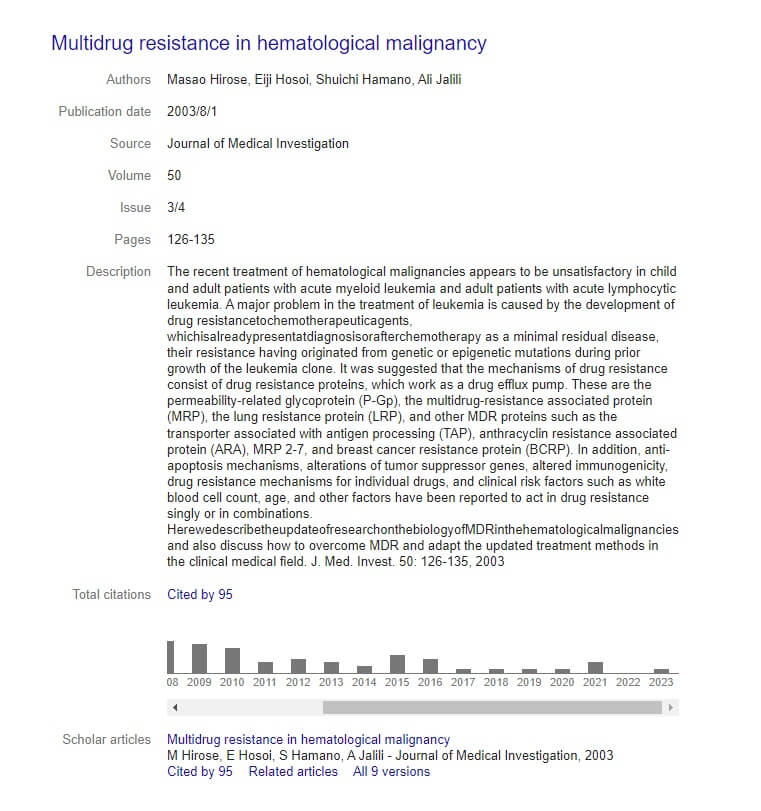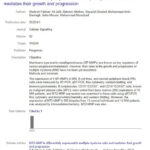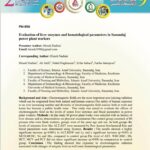Multidrug resistance in hematological malignancy

Multidrug resistance in hematological malignancy
Authors Masao Hirose, Eiji Hosoi, Shuichi Hamano, Ali Jalili
Publication date 2003/8/1
Source Journal of Medical Investigation
Volume 50
Issue 3/4
Pages 126-135
Description The recent treatment of hematological malignancies appears to be unsatisfactory in child
and adult patients with acute myeloid leukemia and adult patients with acute lymphocytic leukemia. A major problem in the treatment of leukemia is caused by the development of drug resistancetochemotherapeuticagents,
whichisalreadypresentatdiagnosisorafterchemotherapy as a minimal residual disease, their resistance having originated from genetic or epigenetic mutations during prior growth of the leukemia clone. It was suggested that the mechanisms of drug resistance consist of drug resistance proteins, which work as a drug efflux pump. These are the permeability-related glycoprotein (P-Gp), the multidrug-resistance associated protein (MRP), the lung resistance protein (LRP), and other MDR proteins such as the transporter associated with antigen processing (TAP), anthracyclin resistance associated protein (ARA), MRP 2-7, and breast cancer resistance protein (BCRP). In addition, anti- apoptosis mechanisms, alterations of tumor suppressor genes, altered immunogenicity, drug resistance mechanisms for individual drugs, and clinical risk factors such as white blood cell count, age, and other factors have been reported to act in drug resistance singly or in combinations.
Herewedescribetheupdateofresearchonthebiology ofMDRinthehematologicalmalignancies and also discuss how to overcome MDR and adapt the updated treatment methods in the clinical medical field. J. Med. Invest. 50: 126-135, 2003
Scholar articles Multidrug resistance in hematological malignancy
M Hirose, E Hosoi, S Hamano, A Jalili – Journal of Medical Investigation, 2003 Cited by 95 Related articles All 9 versions


